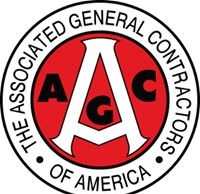PA Lead Poisoning Prevention Week is Oct. 25-31 – Learn How to Protect Your Home and Family
PHILADELPHIA – October 26, 2015 – (RealEstateRama) — Lead poisoning is the number one environmental health threat in the U.S. for children ages 6 and younger.
The U.S. Environmental Protection Agency has declared Oct. 25-31 Lead Poisoning Prevention Week to make families more aware of the hazards of lead and lead-based paint in the home and in childcare facilities. This year’s theme, “Lead-Free Kids for a Healthy Future,” will focus on ways to reduce a child’s exposure to lead and prevent its serious health effects.
You may have lead around your home without knowing it because you can’t see, taste, or smell lead. Because it does not break down naturally, lead can remain a problem until it is removed. Before we knew how harmful it could be, lead was used in paint, gasoline, water pipes, and many other products. Now that we know the dangers of lead, house paint is almost lead-free, leaded gasoline has been phased out, and household plumbing is no longer made with lead materials.
EPA has taken regulatory steps aimed at preventing lead poisoning. Under the Renovation, Repair and Painting Rule (RRP), contractors, landlords, window replacement firms and other trades performing renovation, repair and painting projects that disturb lead-based paint in homes, child care facilities, schools and other child-occupied facilities built before 1978 must be certified and must follow Lead Safe work practices, and provide the EPA informational booklet “Protecting Your Home from the Hazards of Lead-based Paint” prior to the start of work practices to prevent lead contamination.
The RRP does not apply to individuals doing work on their own home. However, EPA recommends that Lead-Safe work-practices be followed for these projects, as well.
Currently, owners of residential rental properties built before 1978 must disclose known information on lead-based paint and lead-based paint hazards before leases take effect. Leases must include a disclosure form about lead-based paint.
Sellers of properties built before 1978 must disclose known information on lead-based paint and lead-based paint hazards before selling a house. Sales contracts must include a disclosure form about lead-based paint. Buyers have up to 10 days to check for lead hazards.
How does lead affect a child’s health? The long-term effects of lead in a child can be
severe. They include learning disabilities, decreased growth, hyperactivity, impaired hearing, and even brain damage. If caught early, these effects can be limited by reducing exposure to lead or by medical treatment. Pregnant women should avoid exposure to lead because lead can pass through a woman’s body into the unborn baby.
The good news is there are simple things you can do to help protect your families.
1. Get your child tested. Even children who appear healthy may have high levels of lead. You can’t tell if a child has lead poisoning unless you have him or her tested. A blood test takes only 10 minutes, and results should be ready within a week. Blood tests are usually recommended for children at ages one and two. To find out where to have your child tested, call your doctor or local health clinic. They can explain what the test results mean, and if more testing will be needed.
2. Keep it clean. Ordinary dust and dirt may contain lead. Children can swallow lead or breathe lead contaminated dust if they play in dust or dirt and then put their fingers or toys in their mouths, or if they eat without washing their hands first. Keep the areas where your children play as dust-free and clean as possible. Wash pacifiers and bottles after they fall on the floor. Keep extras handy. Clean floors, window frames, window sills, and other surfaces weekly. Use a mop, sponge, or paper towel with warm water and a general all-purpose cleaner or a cleaner made specifically for lead. Thoroughly rinse sponges and mop heads after cleaning dirty and dusty areas. Wash toys and stuffed animals regularly. Make sure your children wash their hands before meals, nap time, and bedtime.
3. Reduce the risk from lead paint. Most homes built before 1978 contain leaded paint. This paint could be on window frames, walls, the outside of your house, or other surfaces. Tiny pieces of peeling or chipping paint are dangerous if eaten. Lead paint in good condition is not usually a problem except in places where painted surfaces rub against each other and create dust. (For example, when you open a window, the painted surfaces rub against each other.) Make sure your child does not chew on anything covered with lead paint, such as painted window sills, cribs, or playpens. Don’t burn painted wood, it may contain lead.
4. Don’t remove lead paint yourself. Lead dust from repairs or renovations of older buildings can remain in the building long after the work is completed. Hire a person with special training for correcting lead paint problems to remove lead paint from your home, someone who knows how to do this work safely and has the proper equipment to clean up thoroughly.
5. Eat right. A child who gets enough iron and calcium will absorb less lead. Foods rich in iron include eggs, lean red meat, and beans. Dairy products are high in calcium. Don’t store food or liquid in lead crystal glassware or imported or old pottery. If you reuse plastic bags to store or carry food, keep the printing on the outside of the bag.
For more information, please go to: www.epa.gov/lead or call the National Lead Information Center at 1-800-424-LEAD, that’s 1-800-424-5323.
To find Lead-Safe Certified firms near you go to: http://cfpub.epa.gov/flpp/searchrrp_firm.htm
Contact Information: Roy Seneca (215) 814-5567















